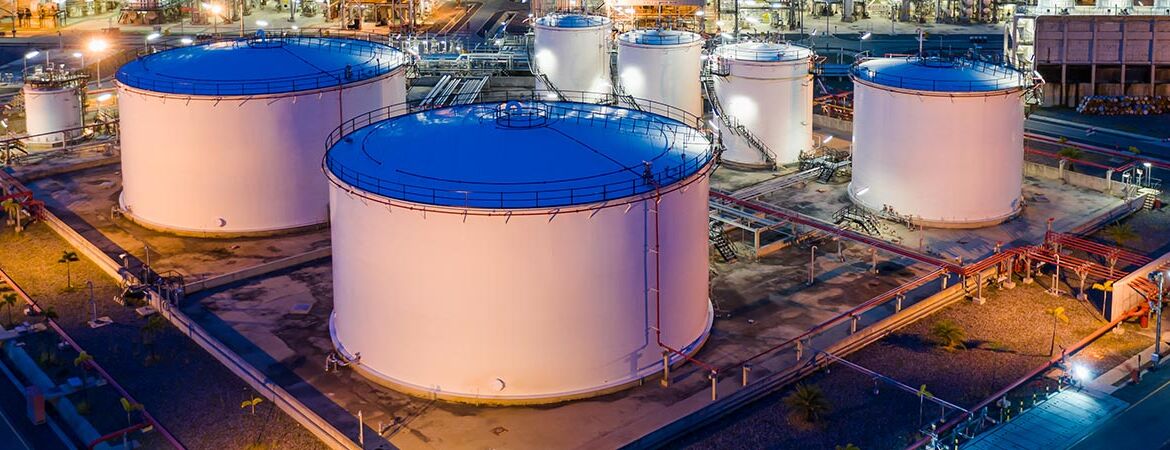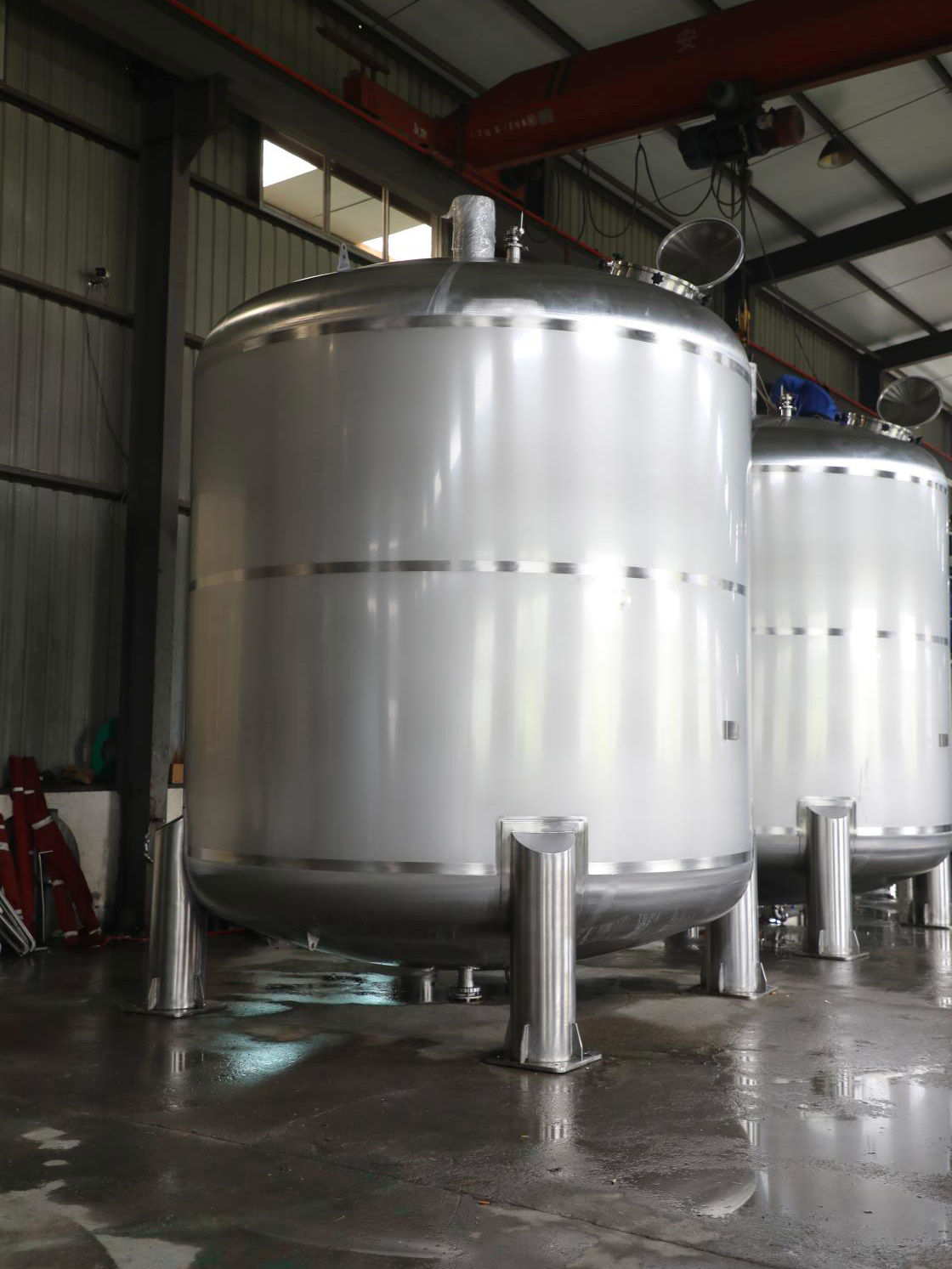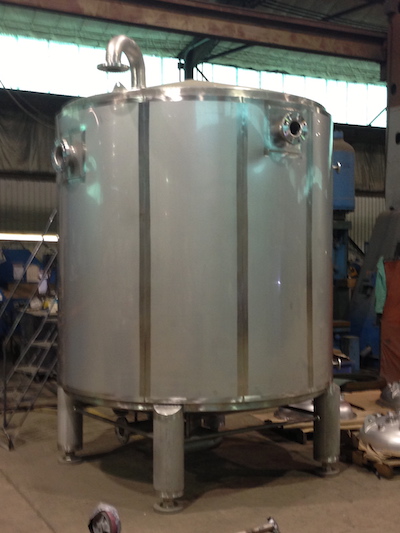Top Innovations in Storage Tank Manufacturing: Increasing Performance and Sustainability
The landscape of storage tank manufacturing is undertaking significant makeover as sector leaders increasingly adopt advancements focused on improving both effectiveness and sustainability. Trick developments, including the use of wise technologies and innovative materials, are redefining functional requirements while addressing environmental worries. In addition, modular storage tank layouts and green manufacturing processes present new avenues for resource optimization. As these patterns remain to evolve, the implications for industry practices and long-lasting sustainability goals value further exploration. What details developments are establishing the phase for this standard change?
Advanced Products for Sturdiness
The advancement of storage tank manufacturing is progressively driven by the assimilation of advanced products created to improve durability and efficiency. Generally, tank were created mostly from carbon steel, which, while effective, is susceptible to deterioration and architectural degradation with time. Permian Basin Oil & Water Tank Company. Recent improvements have actually seen the introduction of high-performance alloys, composite products, and polymers that offer superior resistance to environmental aspects and chemical exposure
For circumstances, stainless steel and duplex alloys are currently usual in applications needing enhanced corrosion resistance, particularly in chemical or marine storage settings. Additionally, composite materials, such as fiberglass-reinforced plastics, offer an excellent strength-to-weight ratio while minimizing upkeep expenses as a result of their non-corrosive nature. These developments not just prolong the lifespan of storage space containers but likewise enhance their operational efficiency.
Furthermore, the adoption of nanotechnology in coverings is showing beneficial in additional improving the protective residential properties of tank surface areas. These improvements not only decrease the regularity of examinations and fixings but also add to sustainability by minimizing resource intake and waste. As the market remains to innovate, the focus on innovative materials will stay a keystone of storage tank manufacturing, guaranteeing security and reliability sought after applications.
Smart Checking Technologies
Developments in clever surveillance innovations are revolutionizing the monitoring and maintenance of tank (Texas Oil & Gas Storage Tank Fabrication Authority). These innovations utilize the Web of Things (IoT), expert system (AI), and advanced sensor innovations to boost functional efficiency and security. By incorporating real-time data collection, operators can check tank conditions, such as temperature, pressure, and fluid levels, with extraordinary accuracy
Smart surveillance systems enable predictive maintenance, enabling for timely treatments before possible failings happen. This minimizes downtime and minimizes maintenance expenses, as drivers can attend to concerns based upon data-driven insights as opposed to reactive steps. Furthermore, these innovations boost safety and security methods by providing notifies for leaks, overfills, or structural weak points, considerably mitigating environmental threats.
Cloud-based systems promote centralized tracking throughout multiple areas, allowing drivers to make informed choices promptly. Boosted information analytics likewise contribute to optimizing stock monitoring, guaranteeing that resources are used successfully.
As regulative demands for environmental conformity become progressively rigid, wise monitoring technologies play a crucial function in ensuring tank fulfill these standards. Generally, the adoption of these innovations not just improves operational performance yet also advertises sustainability in storage tank manufacturing and management.
Modular Tank Styles
Modular container layouts are transforming the storage tank market by offering boosted customization options that cater to certain client needs. These layouts not just promote customized services yet likewise supply space-saving arrangements, making them suitable for diverse settings. As sectors look for efficiency and adaptability, modular storage tanks present an engaging option to conventional storage space options.
Enhanced Personalization Options
As makers seek to fulfill diverse client demands, improved customization alternatives in storage tank design have actually come to be significantly widespread. Modular container designs exemplify this fad, enabling for tailored arrangements that suit numerous functional needs. By making use of modular elements, suppliers can create containers of various dimensions, shapes, and capabilities, ensuring compatibility with certain applications.
These customizable storage tanks can be adjusted to hold various sorts of fluids, consisting of unsafe materials, without jeopardizing security or effectiveness. In addition, modular designs assist in scalability, allowing firms to broaden their storage space capacity seamlessly as need grows. This flexibility not only maximizes space usage however also decreases the total lifecycle expenses related to storage tank installment and maintenance.
Boosted modification options prolong to innovative functions such as integrated surveillance systems, insulation, and specialized coatings that enhance resilience and performance. By providing a series of options, manufacturers encourage customers to select layouts that line up with their functional objectives and sustainability campaigns.
Ultimately, the increase of enhanced personalization choices in storage tank manufacturing underscores a dedication to innovation, enabling sectors to react efficiently to developing market demands while boosting general performance and ecological stewardship. (Fox Tank Company Permian Basin)
Space-Saving Configurations
Making the most of space performance has become a critical factor to consider in storage tank style, particularly with the advent of modular container configurations. These innovative designs enable for the assembly of storage tanks in numerous plans, giving flexibility and flexibility in space-constrained environments. Modular containers can be quickly carried and installed, making them ideal for sectors calling for on-site storage remedies.
The usage of modular designs not only enhances area however additionally boosts scalability. Organizations can begin with a smaller sized unit and increase their storage capacity by including extra modules as need rises. This incremental method enables and minimizes ahead of time costs for far better resource monitoring. Modular tanks can be customized concerning product, setup, and size, providing to certain operational demands.
Sustainability is additionally a vital advantage of modular tank configurations. By using standard parts, makers can decrease waste throughout production and enhance the supply chain. Additionally, these storage tanks usually feature boosted insulation and energy-efficient styles, bring about lower functional costs.
Eco-Friendly Manufacturing Processes
As the demand for eco responsible manufacturing grows, the storage tank market is welcoming environment-friendly processes to improve sustainability. This consists of the selection of sustainable products, the implementation of energy-efficient manufacturing strategies, and the fostering of waste reduction techniques. By focusing on these techniques, producers can markedly decrease their ecological influence while maintaining product quality and performance.
Lasting Material Option
Sustainable material selection is a foundation of green manufacturing procedures in the storage tank sector. The selection of products greatly impacts not just the environmental footprint of production yet additionally the long life and performance of the tanks themselves. Using recycled or sustainably sourced materials, such as high-strength alloys and advanced compounds, decreases the requirement for virgin resources and reduces waste.
In addition, the combination of materials with lower symbolized power contributes to a reduction in greenhouse gas emissions throughout the production lifecycle. Safe finishings and bio-based polymers are obtaining grip, using both longevity and ecological advantages. These products not only fulfill the rigorous requirements for safety and security and performance however likewise boost the containers' resistance to rust, lengthening their solution life and minimizing maintenance prices.
Manufacturers are significantly taking on life cycle evaluation (LCA) methodologies to evaluate the ecological influence of material selections. By Fox Tank Company Permian Basin focusing on materials that are recyclable or biodegradable, the storage tank industry is taking significant strides toward a round economy. This dedication to lasting product option not only straightens with regulatory standards however also fulfills the expanding need from environmentally mindful consumers and services alike.
Energy-Efficient Production Strategies
In the mission for minimizing environmental impact, energy-efficient production techniques have become vital elements in the storage tank manufacturing field - Oil & Gas Storage Tank Fabrication. These methods not only lessen energy usage but also improve functional performance and reduced total production expenses
One considerable technique is the adoption of advanced manufacturing modern technologies, such as computer mathematical control (CNC) devices, which enhance accuracy and decrease waste during the manufacture process. Automation and robotics have actually likewise acquired importance, permitting structured operations that need less power and workforce. Moreover, the combination of renewable resource sources, like solar and wind power, into manufacturing plants has actually come to be progressively typical, enabling firms to minimize their reliance on fossil gas.
In addition, carrying out energy monitoring systems assists maximize and check power usage throughout the production cycle, identifying locations for improvement and ensuring conformity with environmental standards. These systems can cause substantial decreases in power usage, contributing to an extra sustainable manufacturing procedure.
Waste Reduction Strategies
The execution of energy-efficient manufacturing methods normally brings about a heightened focus on waste reduction strategies in storage tank manufacturing. Companies are increasingly embracing methods that reduce material waste while maximizing source usage. Key strategies include lean manufacturing concepts, which simplify procedures to remove inefficiencies and lower excess stock.
Reusing and recycling products is another essential strategy. Numerous manufacturers are now spending in innovations that assist in the reclamation of scrap steel and other spin-offs during production. This not only preserves raw products however likewise reduces disposal costs and ecological impact.
Makers are welcoming electronic modern technologies such as IoT and data analytics to check and handle waste more successfully. These tools can recognize waste generation factors and give understandings for continual renovation. Furthermore, carrying out closed-loop systems makes it possible for business to utilize waste items as inputs for new processes, fostering a circular economic climate.
The pursuit of certifications such as ISO 14001 emphasizes the dedication to sustainability and waste decrease, positioning business favorably in an open market. By methodically resolving waste, storage tank producers can achieve both economic and environmental advantages, driving onward an extra sustainable sector.
Energy-Efficient Insulation Solutions
As producers seek to enhance the performance of storage containers, they are transforming to cutting-edge energy-efficient insulation remedies that significantly reduce thermal losses. One popular trend is using innovative products such as aerogels and vacuum-insulated panels, which offer remarkable thermal resistance while being light-weight. These products not only reduce warm transfer but additionally add to a lowered total footprint and lower setup costs.

Carrying out these energy-efficient insulation services not only brings about substantial power savings yet additionally straightens with sustainability objectives by decreasing greenhouse gas exhausts connected with home heating and cooling procedures. As the market advances, the emphasis on insulation innovation will certainly stay pivotal in guaranteeing that storage containers fulfill contemporary efficiency criteria while contributing favorably to ecological sustainability.


Automation in Tank Production
Advancements in automation innovation are transforming container manufacturing, significantly improving effectiveness and precision. Automated systems currently play a crucial duty in various stages of manufacturing, from material dealing with to welding and assembly. These innovations lessen human intervention, thereby minimizing the likelihood of errors and increasing throughput.
Robotic systems are progressively used for jobs such as welding and surface therapy, making sure regular high quality and minimizing manufacturing time. Automated quality control systems employ innovative sensing units and device discovering formulas to discover defects in genuine time, permitting suppliers to attend to concerns immediately and keep high standards.
The assimilation of Web of Things (IoT) modern technology in tank production promotes real-time tracking of machinery and processes. This connectivity results in improved functional insights, enabling manufacturers to maximize workflows and upkeep routines. Anticipating analytics can anticipate devices failures, further enhancing reliability and lessening downtime.
Enhanced Safety And Security Attributes
Incorporating boosted security attributes into storage tank manufacturing has become a critical focus for market leaders. As the need for trustworthy and secure storage space remedies grows, manufacturers are taking on ingenious technologies and layout principles to mitigate risks connected with unsafe products.
One significant advancement is the unification of sophisticated leak detection systems. These systems use sensing units that keep an eye on tank integrity, making it possible for very early identification of leaks and avoiding ecological contamination. Additionally, using double-walled containers adds an extra layer of defense, guaranteeing that if the inner wall fails, the outer wall surface includes any kind of prospective spills.
Suppliers are applying pressure relief shutoffs and overfill prevention systems to resolve prospective overpressurization and overflow circumstances. These devices are developed to trigger immediately, greatly lowering the danger of catastrophic failings.
The integration of smart monitoring innovations enables for real-time information collection and analysis. This capability allows proactive upkeep and fast feedback to any safety and security issues, making sure conformity with market regulations.
Frequently Asked Concerns
How Do Storage Tank Innovations Impact Overall Operational Expenses?
Advancements in storage tank manufacturing substantially reduce functional expenses by boosting performance, decreasing upkeep demands, and enhancing source usage. These improvements cause lower energy intake and long term tools life-span, ultimately improving total economic performance for companies.

What Industries Advantage The Majority Of From Advanced Storage Tank Technologies?
Industries such as oil and gas, chemicals, water treatment, and food processing significantly take advantage of sophisticated storage tank modern technologies. These advancements improve safety and security, enhance source management, and boost functional effectiveness, ultimately reducing costs and ecological effect.
Exist Details Certifications for Eco-Friendly Tank?
Yes, certain certifications for environment-friendly tank exist, such as the Environment-friendly Structure Council's LEED qualification, ISO 14001 for environmental monitoring, and different industry-specific requirements that assure compliance with sustainability and security laws.
What Is the Lifespan of Modern Tank Compared to Standard Ones?
Modern storage space containers generally possess a lifespan of 30 to 50 years, significantly surpassing standard tanks, which usually last 15 to thirty years. Advanced materials and manufacturing techniques contribute to this enhanced sturdiness and longevity.
How Do These Developments Affect Regulatory Compliance in Tank Manufacturing?
Technologies in storage tank manufacturing enhance regulative conformity by incorporating sophisticated products, automated monitoring systems, and improved layout criteria. These innovations assure adherence to security guidelines, minimize ecological impact, and advertise sustainability within the market.
The evolution of storage tank manufacturing is progressively driven by the combination of sophisticated materials designed to improve durability and efficiency. Modular tank styles are revolutionizing the storage space container industry by providing enhanced modification choices that provide to details client demands. Optimizing space efficiency has ended up being an essential consideration in storage space tank layout, specifically with the advent of modular storage tank configurations - Oil & Gas Storage Tank Fabrication. Advancements in storage space container manufacturing considerably lower operational expenses by improving performance, lessening maintenance requirements, and optimizing resource usage. Modern storage space tanks typically have a life expectancy of 30 to 50 years, considerably surpassing conventional containers, which usually last 15 to 30 years